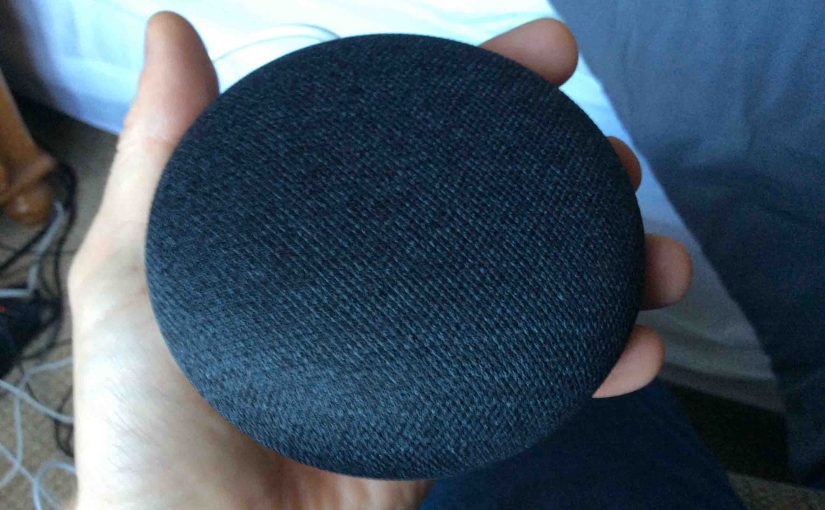You can now use Google Mini as a Bluetooth Speaker due to firmware and Google Home app updates back in 2017. So in this post, we show how to connect your tablet or phone to this speaker via Bluetooth, and transmit audio to the speaker for room-filling, surprisingly awesome sounding playback given how small the Mini is.
We’d like to be able to connect (pair) the Google Mini smart speaker to an iPad Air tablet, such that the speaker becomes a Bluetooth speaker, allowing us to play any audio that the iPad is playing, through the Mini. You might do this if you’re watching a Netflix movie or playing your Amazon music library on your iPhone, but wish to have louder, and over all better sound for it than what you get via the speakers built into your phone / tablet. You wish to enjoy the full sound of your Mini Google speaker for all this content.
How to Use Google Mini as Bluetooth Speaker
1. Connect All Devices to the internet
First, make sure that both your tablet and your Google Mini are online and connected to the internet.
2. Turn Bluetooth ON
Next, enable Bluetooth on the source device that you’re pairing with the Google Mini. In our case, we’re pairing from an iPad Air.
Then, and assure that you see the “Now discoverable as” message, as shown next.
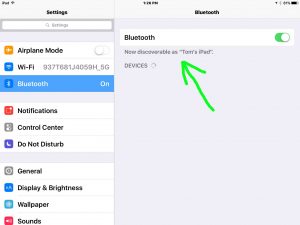
3. Next, on the Tablet, Run the Google Home App
On our iPad, this app appears on the third home page, as pictured next.
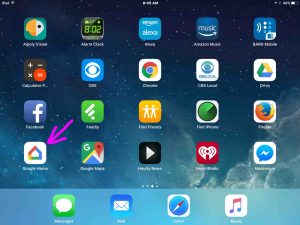
The Google Home app home screen then displays, as pictured next.
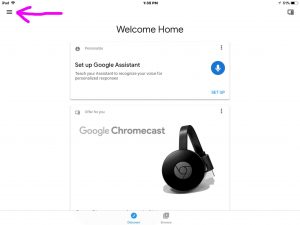
4. Then, tap the Hamburger Item to Continue Forward with How to Use Google Mini as a Bluetooth Speaker
Then, find the hamburger menu control near the top left corner of the Google Home app home screen. This brings up the main menu window, as shown next.
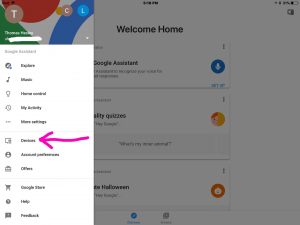
5. Tap the Devices Menu Item
This brings up the list of Google Home devices that the app knows about, as shown next.
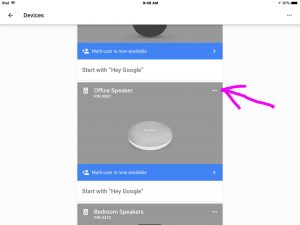
6. Tap the Hamburger Menu Link for the Mini Speaker you’re Pairing
Find the control menu (hamburger) item pointed at by the purple arrow in the last picture. The hamburger menu opens, as shown in the next picture.
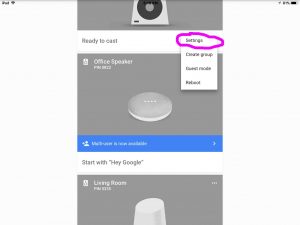
7. Tap the Settings Item
in the hamburger menu as displayed in the previous picture, with the purple circle around it. You then see the Device Settings screen for the specific Google Mini speaker device displayed on the previous screen, whose specific setting options are shown on the screen shown next. In our case, that device is named Office Speaker.
Note that we’ve scrolled down to the Device Settings section on this screen to find the Paired Bluetooth Devices option, as circled in the next picture.
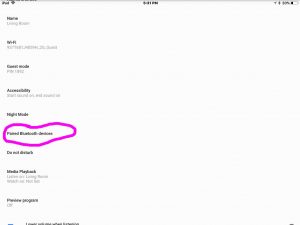
8. Tap the Paired Bluetooth Devices Item to Continue with How to Use Google Mini as a Bluetooth Speaker
as circled in the previous picture. The Paired Bluetooth Devices screen then appears as shown next, where we could select a Bluetooth device from a list of devices that we’ve previously paired with, had we ever paired with any before. Since we have not, the screen is almost entirely blank.
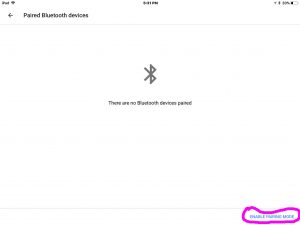
9. Tap the Enable Pairing Mode Link
This puts the Google Home device we’re working with into Bluetooth discovery mode. That is, it will now show up when other in-range devices scan for Bluetooth Devices. Confirmation of this is shown by a black bar momentarily appearing at the bottom of the Paired Bluetooth Devices screen, as shown next.
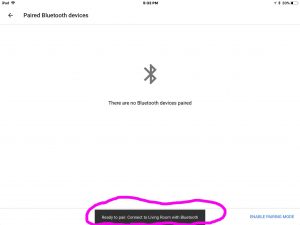
10. Go to the Bluetooth Settings Screen
Find Bluetooth Settings somewhere in the Settings app on your phone or tablet.
On our iPad Air, we hit the home button, tapped the Settings app, and then tapped Bluetooth on the left side of the screen, to reveal the following screen.
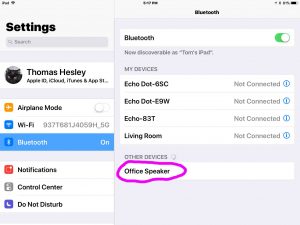
11. Next, Tap the Desired Device in this List
In our case here, we wish to pair the Office Speaker device, as circled above.
Then, if all goes well, your Mini plays a short burst of musical chord, and pairing then occurs. Your paired device then moves up from the Other Devices list to My Devices if you’re using pairing with an iOS device, as shown next for our case; the purple circled Office Speaker device.
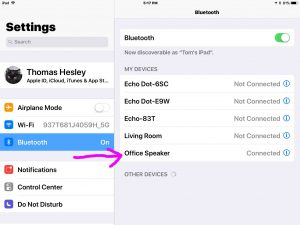
12. Return to the Paired Bluetooth Devices Screen in the Google Home App
There, you’ll now find that the Google Home App had added the source device (your phone or tablet) to its known Bluetooth devices list for the Mini, as illustrated in the next picture. Our pairing source device is called Tom’s iPad.
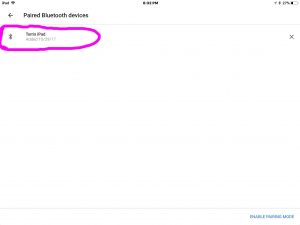
13. Done with How to Use Google Mini as a Bluetooth Speaker
At this point, all your tablet’s generated sounds would play on your Google Mini smart speaker. Pairing is complete.
You would unpair your speaker from a source Bluetooth device by saying, “Okay Google, disconnect” or “Hey Google, disconnect.” Google Mini allows you to unpair your speaker from the source by either issuing these voice commands to it, or by going into the Bluetooth settings on your source device, and breaking the connection from there.
Other Posts About the Google Mini Smart Speaker
References for How to Use Google Mini as a Bluetooth Speaker
Revision History
-
- 2023-02-23: Retargeted.
- 2020-05-10: Added the Other Posts About… section.
- 2019-05-05: Added key phrase targeting for ‘Use Google Mini as Bluetooth Speaker’. Added tags and deleted ad scripts.
- 2017-12-11: Fixed some typos.
- 2017-11-05: Originally published.
